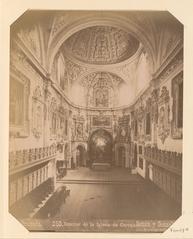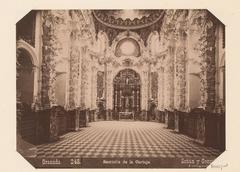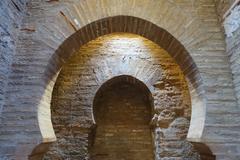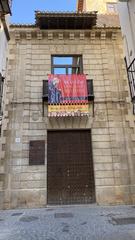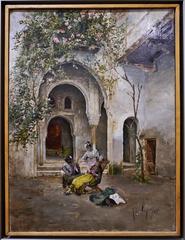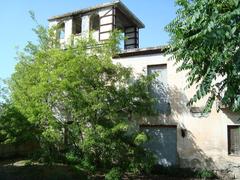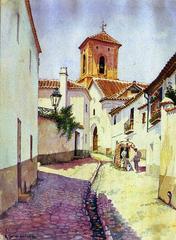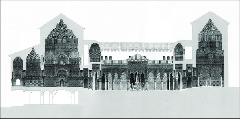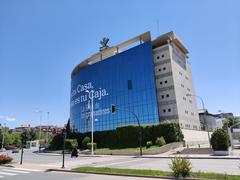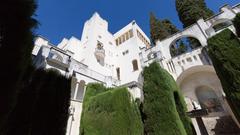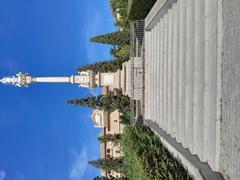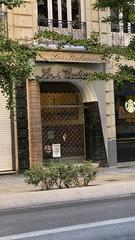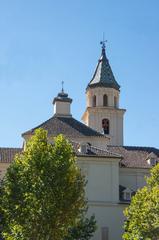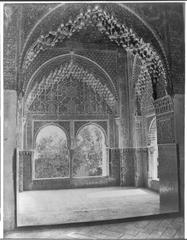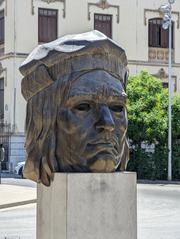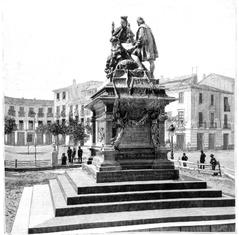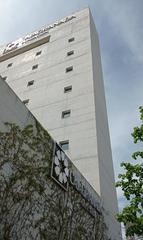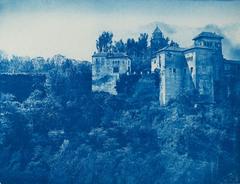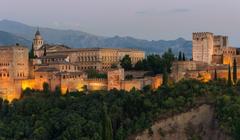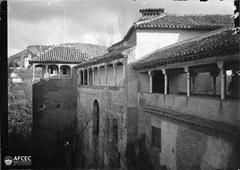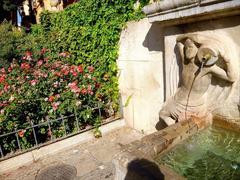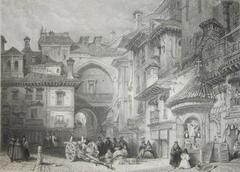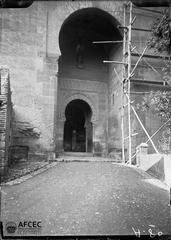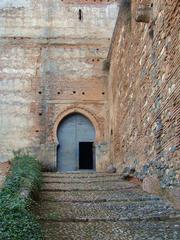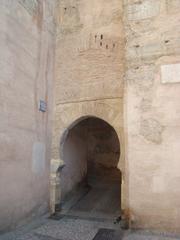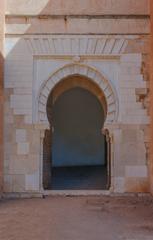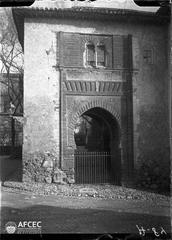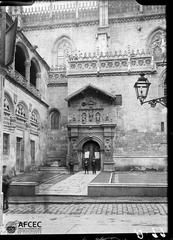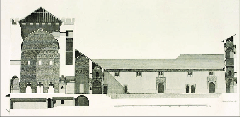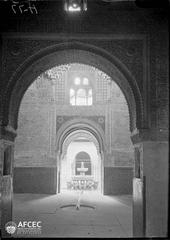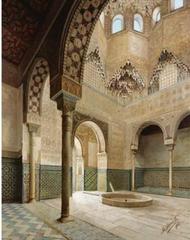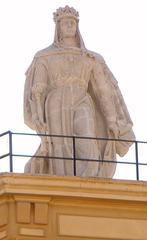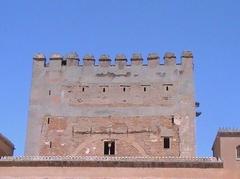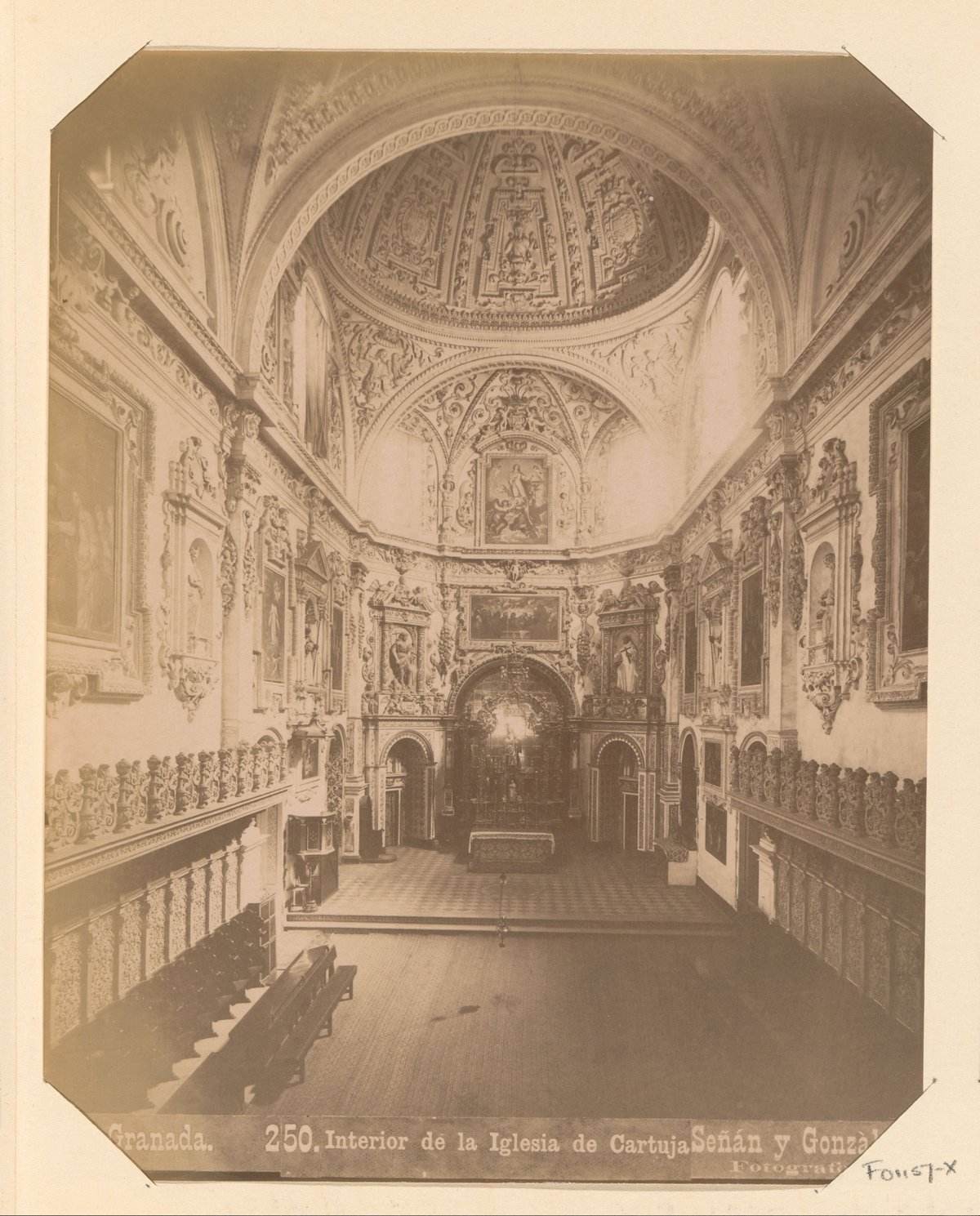
Granada Charterhouse: Visiting Hours, Tickets, and Complete Guide to Granada’s Historic Gem
Date: 15/06/2025
Introduction
Nestled on the northern edge of Granada, Spain, the Granada Charterhouse (Cartuja de Granada) is a monumental testament to Spanish Baroque artistry, religious devotion, and centuries of historic transformation. Founded after the Reconquista in the early 16th century, the Charterhouse reflects the evolution of monastic life, the spiritual ambitions of the Carthusian order, and the artistic flourishing of Spain’s Golden Age. Visitors encounter a harmonious blend of contemplative austerity and exuberant Baroque decoration in the sacristy, church, and surviving cloisters. This guide provides comprehensive insights into the Charterhouse’s heritage, practical visiting details, accessibility, and recommendations for exploring Granada’s broader historical tapestry (Cartuja de Granada - Historia, Mapping Spain, gosiagranadaguide.com).
Table of Contents
- Foundations and Early Development
- Architectural Evolution and Artistic Flourishing
- Historical and Religious Context
- Artistic Heritage and Masterpieces
- Visiting the Granada Charterhouse: Essential Information
- Practical Visitor Tips
- Frequently Asked Questions (FAQ)
- Conclusion and Next Steps
- Sources and Official Links
Foundations and Early Development
The Granada Charterhouse, officially Monasterio de Nuestra Señora de la Asunción de la Cartuja, was conceived in the spirit of religious and artistic renewal that swept post-Reconquista Spain. In 1514, Carthusian monks arrived from El Paular, aiming to reestablish monastic life in recently Christianized Granada (Cartuja de Granada - Historia). Patronage from figures like Don Gonzalo Fernández de Córdoba (the Gran Capitán) initially fueled construction, but funding lapses led to lengthy delays. Work resumed in 1516 under Fray Alonso de Ledesma, ultimately stretching across three centuries due to evolving tastes and intermittent resources. The original plan was never fully realized, and key sections, such as the monks’ cells and original cloister, were later destroyed in 1842.
Architectural Evolution and Artistic Flourishing
The Charterhouse’s architecture is a fascinating palimpsest, blending late Gothic, Renaissance, and especially Spanish Baroque elements from a construction period spanning the 16th to 19th centuries (Mapping Spain, Love Granada). Early elements like the refectory (1531) display Renaissance sobriety, while later additions, most notably the church, sacristy, and sanctuary, are celebrated as some of Spain’s most dazzling Baroque interiors. The cloister, with its Doric columns and peaceful garden, echoes the Carthusian emphasis on contemplation and silence. Though the original monks’ cells no longer survive, the remaining structures—refectory, chapter room, church, and sacristy—embody the evolution of Spanish ecclesiastical design (Piccavey).
Historical and Religious Context
The Charterhouse was founded as part of a broader Catholic consolidation following the fall of the Nasrid Kingdom in 1492 (Granada: A Historical Overview of Its Impact). The Carthusian order, known for strict contemplative solitude, brought a distinct spiritual ethos to Granada—one that emphasized prayer, study, and artistic patronage. Even after the secularization of monastic properties in the 19th century, the Charterhouse’s influence on Granada’s religious and artistic landscape has endured.
Artistic Heritage and Masterpieces
The Charterhouse is renowned for its spectacular Baroque interiors, especially the church and sacristy. The sacristy, completed in the 18th century, is a masterpiece of stucco, marble, and gilded woodwork, culminating in illusionistic frescoes by Antonio Palomino. Sculptures by José de Mora and the García brothers, along with altarpieces and paintings, reflect Counter-Reformation Spain’s use of visual splendor to inspire devotion (Love Granada, Mapping Spain, Piccavey). The refectory is adorned with works by Fray Juan Sánchez Cotán, providing a rare glimpse into monastic life.
The overall artistic program, from the cloister’s tranquility to the sacristy’s extravagant decoration, mirrors the Carthusian journey from earthly simplicity to heavenly glory—an experience enhanced by the interplay of architecture, painting, and sculpture (gosiagranadaguide.com).
Visiting the Granada Charterhouse: Essential Information
Location and Access
- Address: Paseo de Cartuja, s/n, 18011 Granada, Spain, approx. 2 km north of the city center (Cartuja de Granada official site).
- Getting There: 25–30 minute walk (uphill), or take city bus lines U1, U3, N7 to “Cartuja – Monasterio” stop. Taxis and limited parking are available (Tall Girl Big World, Chasing Whereabouts).
Visiting Hours
- Sunday to Friday: 10:00 – 18:30
- Saturday: 10:00 – 12:30 and 15:00 – 17:30
- Closed: December 25th and January 1st; closes early on December 24th and 31st (Tickets Granada Cristiana).
- Check the official website for seasonal changes.
Tickets and Prices
- Standard adult: €5–€7 (check official site for updates).
- Discounts: For students, seniors, groups, and local residents with prior arrangement.
- Children: Under 12 often enter free.
- Purchase: Online in advance (official ticketing) or at the entrance.
- Combined tickets: Available for multiple historic sites in Granada.
Accessibility and Facilities
- Accessibility: Partial; some steps and uneven surfaces. Contact the site in advance if you have reduced mobility (Tickets Granada Cristiana).
- Facilities: Restrooms, water fountains, shaded cloister areas.
- Visitor Conduct: Silence in sacred spaces, no food or drink, and dress modestly.
Guided Tours and Multimedia
- Guided Tours: Highly recommended; book for groups via [email protected].
- Audio Guide: Free mobile app available. Download before your visit (Cartuja de Granada).
- Photography: Allowed without flash, tripods, or selfie sticks. Respect restrictions during services.
Nearby Attractions and Amenities
- Close to the University of Granada campus; cafés and restaurants nearby.
- Other sites: Alhambra, Granada Cathedral, Albaicín district, and natural parks (Wild Trips).
- On-site gift shop with religious items and souvenirs.
Practical Visitor Tips
- Best Visiting Times: Spring and autumn for pleasant weather; early mornings in summer to avoid heat (Tall Girl Big World).
- Visit Duration: 1–2 hours recommended.
- Special Events: Occasional concerts, religious festivals, and performances. Check official site for events.
- Sensory Garden: Experience the aromatic garden for peaceful reflection (gosiagranadaguide.com).
Frequently Asked Questions (FAQ)
Q: What are the Granada Charterhouse visiting hours?
A: Sunday to Friday: 10:00–18:30; Saturday: 10:00–12:30 and 15:00–17:30. Closed December 25th and January 1st.
Q: How do I buy tickets?
A: Purchase online via the official ticketing website or at the entrance.
Q: Is the Charterhouse accessible for visitors with disabilities?
A: Accessibility is limited; contact the site in advance for guidance.
Q: Are guided tours available?
A: Yes, both guided and audio tours are offered. Group tours require prior booking.
Q: Can I take photos?
A: Yes, but without flash, tripods, or selfie sticks. Respect the sanctity of worship spaces.
Conclusion and Next Steps
The Granada Charterhouse is a luminous chapter in Spain’s cultural and spiritual history—a sanctuary where Baroque artistry, monastic devotion, and Granada’s diverse heritage converge. By planning ahead with up-to-date information on hours, tickets, and guided experiences, visitors can fully appreciate this tranquil yet magnificent monument. Enhance your visit with an audio guide, explore related historical sites in Granada, and immerse yourself in the contemplative beauty of the Cartuja.
For the latest updates, virtual tours, and travel tips, download the Audiala app and follow us on social media. Embark on your journey into Granada’s past and let the Charterhouse’s serenity and splendor inspire you.
